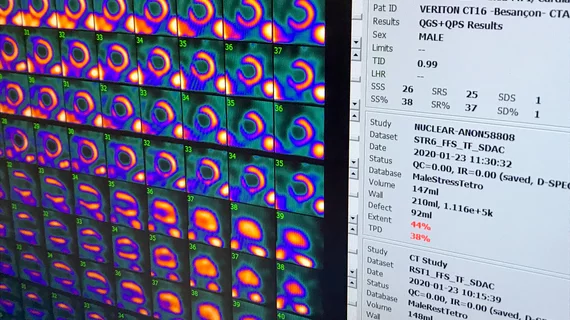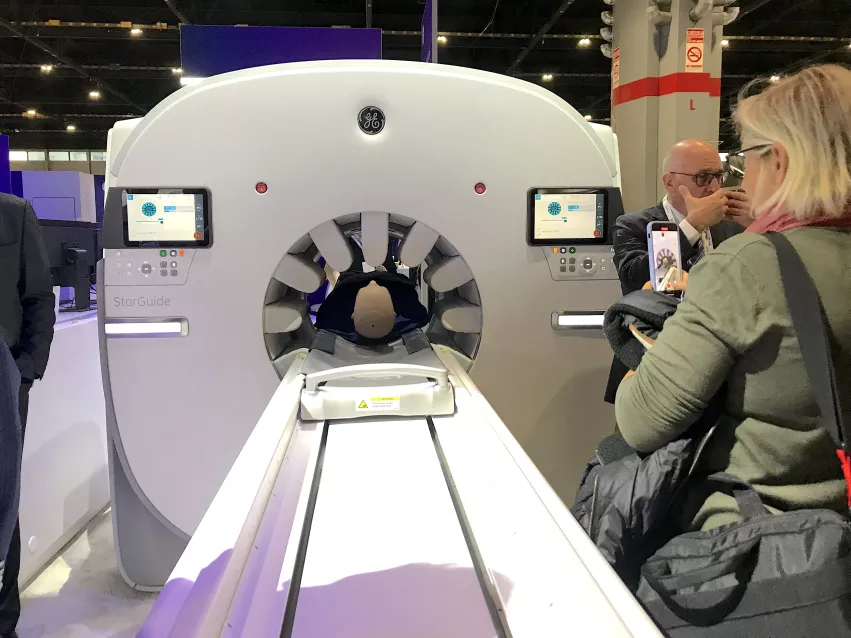In his first president's message to American Society of Nuclear Cardiology (ASNC), 2023 President Mouaz H. Al-Mallah, MD, MSc, FASNC, called for the cardiac imaging subspecialty to up its game with new technology [1].
"Nuclear cardiology imaging remains at the center stage in the era of multimodality testing," Al-Mallah said in his first President's Message to ASNC members this past week. "However, nuclear cardiology teams have many opportunities to broaden our horizon and ensure our labs continue to provide the best quality imaging."
Al-Mallah is the Beverly B. and Daniel C. Arnold Distinguished Chair and Professor of Cardiology at Houston Methodist Academic Institute, professor of medicine at Weill Cornell Medicine, and director of cardiovascular PET at the Houston Methodist DeBakey Heart and Vascular Center.
Building on his ASNC 2022 meeting president-elect address, Al-Mallah's article in the Journal of Nuclear Cardiology urges readers to embrace the "significant innovations" that nuclear cardiology has seen in the past decade.
New innovations in nuclear cardiology
Many nuclear cardiology labs have not seen major upgrades in their imaging systems for more than a decade, and Al-Mallah said it is time for those labs to take the next step to improve patient care with the new technologies now available.
"It is not enough for these innovations to be admired in exposition halls at scientific meetings. Each of us has a responsibility to broaden our horizon and begin using the tools available to us now," he stressed.
Al-Mallah said there have been numerous innovations in nuclear cardiac imaging over the past decade and he highlighted a few technologies he felt were the most impactful. These include significant enhancements in both single-photon emission computed tomography (SPECT) and positron emission tomography (PET) imaging.
The introduction and increased utilization of digital CZT-based cameras in SPECT has increased image quality while reducing radioisotope dose, he explained.
Hybrid SPECT-CT are now becoming more widely available and allow for attenuation correction to enhance the specificity of SPECT myocardial perfusion imaging (MPI). Al-Mallah said this is especially important with the increased prevalence of obesity in patients. These low-dose CT scans can also for coronary calcium scoring to offer more prognostic information.
Artificial intelligence (AI) algorithms are also becoming more widely utilized in clinical practice. Al-Mallah explained AI is now used for virtual attenuation correction.
"Many laboratories are also working on algorithms to measure myocardial blood flow (MBF) using SPECT imaging, a measure that will have important implications for the future," he explained.
The use of cardiac PET imaging is also expanding in the United States and globally. Cardiac PET technology can be used to perform MPI, and when combined with CT, will also provide atherosclerosis assessment with attenuation correction, calcium scoring and MBF measurements.
"PET MPI has been shown to be the most accurate noninvasive test for assessment of suspected or known CAD. Other notable cardiac PET applications include inflammation imaging, infection assessment and viability assessment. These applications are helpful to the general cardiology community and for managing complex cases that often require multimodality imaging," Al-Mallah said.
Nuclear cardiology should offer more information to referring physicians
Al-Mallah said nuclear cardiology teams have many opportunities to broaden their horizons and ensure their labs continue to provide the best quality imaging. He suggests all labs should ask their teams if the lab is acquiring and reporting all of the information your referrers could use for clinical decision making.
"MPI continues to be the most frequently ordered and performed test in U.S. nuclear cardiology labs. We must ensure these procedures continue to provide valuable information to our referrers. Performing these procedures according to the highest quality standards should be the norm in all labs," Al-Mallah said.
This includes embracing tools that allow for attenuation correction, including CT attenuation correction and virtual attenuation correction using machine learning algorithms. He added MBF reserve has proven to be a game-changer in the management of patients with suspected or known coronary artery disease (CAD).
Nuclear laboratories that perform cardiac PET imaging should attempt to measure MBF reserve routinely, while labs that perform SPECT only should consider adding PET-MPI to their portfolio.
"Our reports must include the additional information we are now able to acquire, such as atherosclerosis assessment by coronary artery calcium scoring or visual assessment from CT attenuation correction. This information will help our referrers provide optimal patient care," he explained.
He also urged labs to explore the addition of non-MPI nuclear procedures. These include bone tracer imaging for amyloidosis, inflammation and infection imaging.
He also detailed how the ASNC is helping advance the subspecialty.



